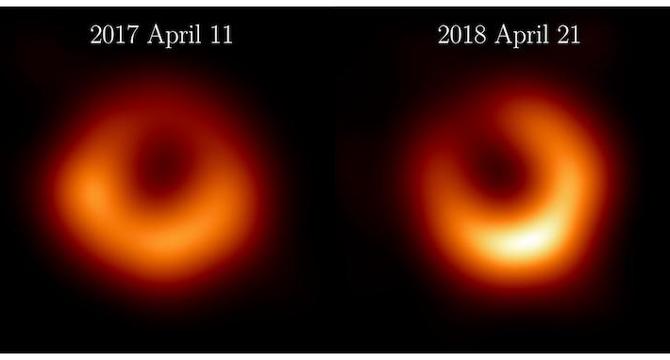Physicsworld
1M
326

Image Credit: Physicsworld
Black hole’s shadow changes from one year to the next
- New statistical analyses of the supermassive black hole M87* by the Event Horizon Telescope explain changes observed since the first image was taken.
- The rotational axis of M87* points away from Earth, and turbulence within the accretion disc affects its appearance.
- The black hole's shadow size and shape can be used to infer its mass, which is about 6.5 billion times that of our Sun.
- Analysis focuses on the bright ring outside the shadow, revealing insights into the acceleration of matter and the role of magnetic fields.
- Statistical techniques were applied to observations from 2017 and 2018, showing changes in the appearance of the bright ring from year to year.
- The observational data supports computer simulations of the turbulent environment around the black hole.
- The EHT used very long baseline interferometry involving a global network of telescopes to observe M87* in detail.
- The multi-epoch analysis provides a new statistical approach to studying black hole systems and their dynamical behavior over time.
- Ongoing analysis of observations made in 2021 and 2022 will offer further insights into black hole accretion environments.
- Future research aims to provide deeper insights into the astrophysics of strong gravity and magnetized plasma near the event horizon.
Read Full Article
19 Likes
For uninterrupted reading, download the app